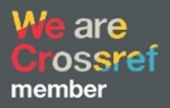ANALISA RISIKO K3 DENGAN PENDEKATAN HAZARD AND OPERABILITY STUDY (HAZOP)
DOI:
https://doi.org/10.51804/tesj.v1i1.67.41-46Keywords:
hazop, k3, risk matriks, risikoAbstract
CV. SS belum menerapkan manajemen K3 secara baik sehingga menyebabkan timbulnya beberapa kecelakaan kerja serta kesehatan para pekerja mengalami gangguan akibatnya proses produksi CV. SS menjadi terganggu. Sedangkan untuk memenangkan persaingan, CV.SS harus bisa mewujudkan kualitas layanan terbaik kepada customer di dalam produk-produknya, termasuk salah satunya aspek responsiveness atau kecepatan respon berkenaan dengan informasi dan produk itu sendiri. Di dalam penelitian ini, dilakukan analisis risiko kerja yang berakibat pada keselamatan dan kesehatan para karyawan di CV. SS, sehingga CV, SS dapat melakukan tindakan pengendalian dan pencegahan terhadap bahaya yang muncul. Dari pendekatan metode hazop diperoleh 5 sumber hazard yang muncul dimana sumber hazard conveyor bahan memiliki tingkat risiko paling tinggi sehingga mendapat prioritas terlebih dahulu untuk diperbaiki.
References
Asfahl, C. R., & Rieske, D. W. (1999). Industrial safety and health management (p. 4). Prentice Hall.
Pujiono, B. N., Tama, I. P., & Efranto, R. Y. (2013). Analisis Potensi Bahaya Serta Rekomendasi Perbaikan Dengan Metode Hazard and Operability Study (HAZOP) Melalui Perangkingan OHS Risk Assessment and Control (Studi Kasus: Area PM-1 PT. Ekamas Fortuna). Jurnal Rekayasa dan Manajemen Sistem Industri, 1(2), p253-263.
Downloads
Published
Issue
Section
License
With the receipt of the article by TESJ Editorial Board and the decision to be published, the copyright regarding the article will be transferred to TESJ. The copyright transfer form can be downloaded here.
TESJ has the right to multiply and distribute the article, and every author is not allowed to publish the same article published in this journal.

Teknika: Engineering and Sains Journal is licensed under a Creative Commons Attribution 4.0 International License.
Under the following terms:
Attribution — You must give appropriate credit, provide a link to the license, and indicate if changes were made. You may do so in any reasonable manner, but not in any way that suggests the licensor endorses you or your use.
.jpg)


